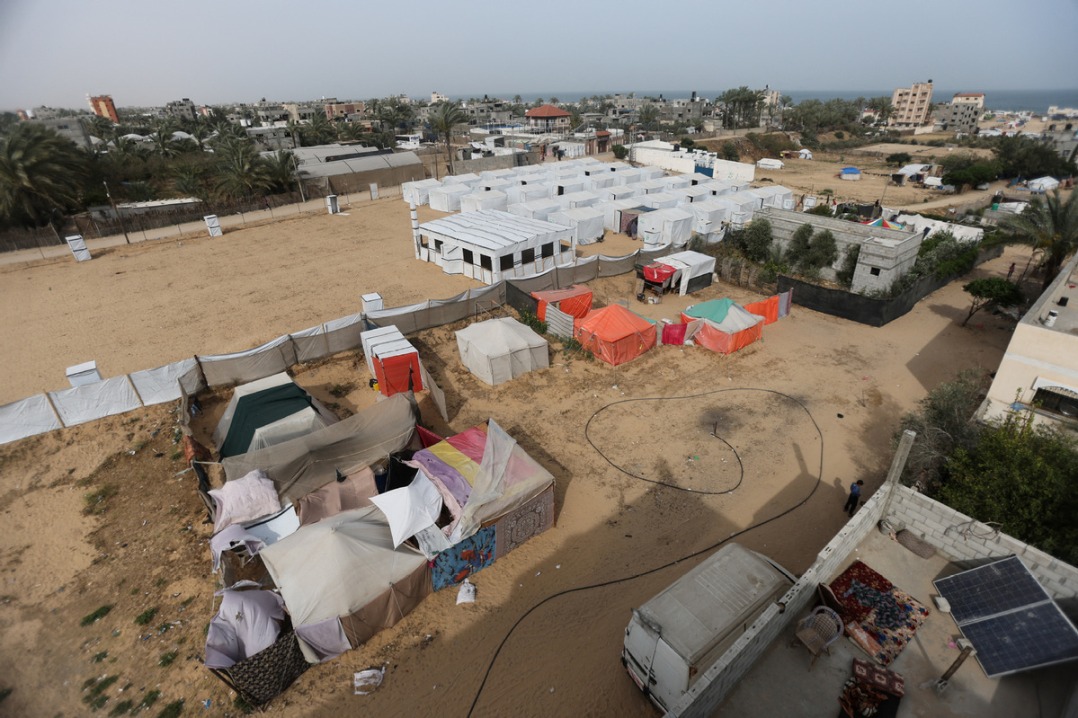Previously struggling Sri Lankan port town looking shipshape


Previously struggling Sri Lankan port town looking shipshape
Sri Lanka's Yuri Kannangara walks the docks with pride as his hometown of Hambantota now boasts a bustling international port with advanced technology, and the 51-year-old believes the facility will enable the area to become an economic growth driver.
Kannangara has been working in the shipping industry for over two decades.
But to support his family, he has spent much of that time away from loved ones, toiling in South African ports as a mechanic, where job prospects and salaries were more competitive.
"This region in Hambantota used to be just a jungle, with only snakes, elephants and peacocks," he said.
But things changed just within a year's time.
In July 2017, Sri Lanka and China signed a joint venture agreement to begin operation at Hambantota Port.
Located on the southern coast of Sri Lanka, Hambantota is within 20 kilometers of one of the world's busiest shipping lanes, through which approximately 200 to 300 vessels daily carry two-thirds of global energy products and half of all containerized cargo.
However, the port has endured a relatively slow pace of growth and development in recent times.
In the JV agreement, China Merchants Port Holdings and Sri Lanka's Port Authority agreed to jointly operate the port via Hambantota International Port Group and Hambantota International Port Services.
The venture began operations in December, and steady growth in business is helping it gain support from Sri Lankans.
Kannangara, now a deputy general manager at the port, said automobile transshipments constitute a major component of the facility's growing business.
In the past, automakers in East Asia and India have had to transfer their cargo ships in the Sri Lankan capital, Colombo, to unload for other destinations. However, with space limitations at Colombo, Hambantota is hoping to step up to the plate.
Ships carrying automobiles often need to anchor 10 days off Colombo Port to await open berths, which in turn has driven up the price of imported vehicles. A 2009 report said Colombo handled 4,973 transshipped vehicles, which fell to just 2,455 the following year.
By 2011, just 993 vehicles were handled at the port.
Automakers from Japan, South Korea and India have begun transshipping increasing numbers of vehicles through Hambantota, being drawn by its convenient location, deepwater berths and availability of storage space, said Tissa Wickramasinghe, HIPS chief operations officer.
China Merchants Port said that since December, over 55,959 cars have been transshipped through Hambantota port.
"Also, in less than a year, the value of land in the Hambantota area has increased three or four times, wages have tripled and rents have doubled," Wickramasinghe added.
Sameera Madumol, a 21-year-old local resident who has been working for Hambantota International Port Group for six months, said his monthly salary has reached $217, which is two times more than his peers. Madumol also said the company's training and promotions provide good development opportunities for employees.
According to the port group, 99 percent of employees are local Sri Lankans, and many have been sent to Shenzhen to receive port-related technical training.
With the cooperation between China and Sri Lanka, the port is now gearing up to become a leading port in the Indian Ocean region.
Ravi Jayawickreme, CEO of HIPS, said the two sides are making efforts to construct the port into a multipurpose port, which will provide a variety of services.
"This area of Hambantota is one of the poorest per capita in the country. So a port like this on the rise is going to be a big boost for the people to raise their living standards," Jayawickreme said.
He said he and his Chinese colleagues share a common dream: "I want to see skyscrapers here, I want to see industries coming in here, and I want to see the people of the area become prosperous."



































